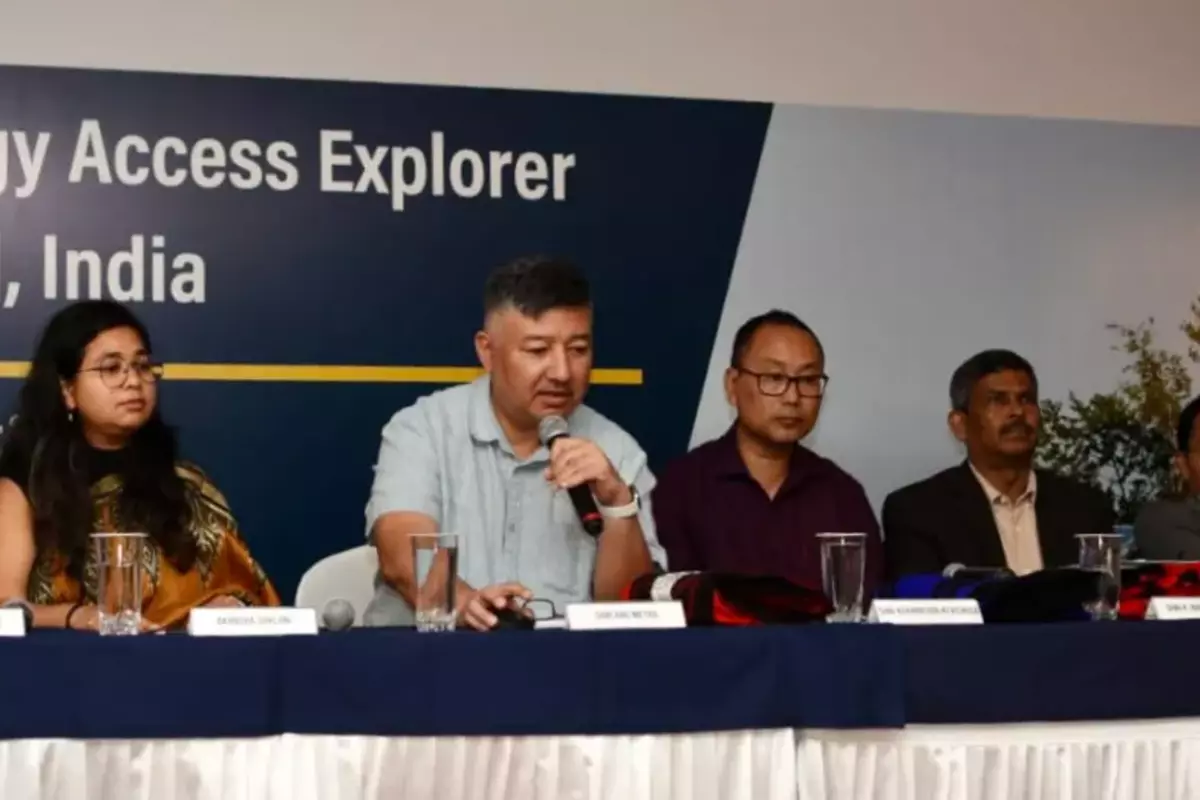
The Energy Access Explorer (EAE), the World Resources Institute’s (WRI) premier geospatial platform, was introduced to the state of Nagaland on Friday in Kohima. Nagaland is now the third Indian state to get access to the site.
EAE is a geospatial platform that offers information on regional indices of power, health, education, and way of life.
It intends to help governments, business owners, and policymakers choose the least expensive and most environmentally friendly energy access options for untapped and underprivileged populations in order to hasten growth.
Data collecting in a state like Nagaland can be difficult owing to connection and accessibility concerns, according to Abu Metha, Chairperson of the Investment and Development Authority of Nagaland (IDAN) and Adviser to the Chief Minister, who attended the event.
He was grateful that the WRI had taken the initiative to include Nagaland because the Northeast area of India is frequently disregarded.
A plan for the state’s economic success is being developed by an expert group that has been established under IDAN, according to Metha. The committee will deliver its conclusions to the Chief Minister, who will subsequently inform the Prime Minister. The committee is made up of professionals and decision-makers.
In this regard, Metha stressed the necessity of Nagaland’s energy roadmaps. He said that the need for sustainable energy in the state is urgent, and that energy roadmaps will assist the state go in the right direction.
“EAE is going to play a vital role in the development of the state and will bring a new narrative for the state of Nagaland. When we talk about progress and development, one of the backbones is energy. Without energy, no progress is possible. We look forward to strengthening our partnership with WRI India so that we can collectively share knowledge and move towards our collective aspirations,” he added.
A Letter of Intent for potential future partnerships was delivered to the IDAN chairman by the WRI India.
WRI India estimates that 12% of the 2074 public schools and roughly a third of the 434 sub-health clinics in Nagaland lack access to electricity. In light of the fact that many of them are located in isolated areas, WRI proposed that implementing cutting-edge solutions to satisfy these needs in social infrastructure is essential for the state’s fair growth.
According to Dr. Chekroshüyi Tetseo, director of health and family welfare, the state has 12 district hospitals, 33 community health centres, 144 primary health centres, and 538 sub centres, 301 of which have been upgraded to health and wellness centres (HWC). He said that the state administration is working to convert every subcenter to a HWC.
According to him, each of these healthcare institutions has refrigerators for keeping necessary medications and vaccinations on hand and needs a constant source of electricity. He continued by saying that the district hospitals have complex equipment including ventilators, heart monitors, oxygen plants, and other items that need a sufficient and consistent power supply.
According to him, each of these healthcare institutions has refrigerators for keeping necessary medications and vaccinations on hand and needs a constant source of electricity. He continued by saying that the district hospitals have complex equipment including ventilators, heart monitors, oxygen plants, and other items that need a sufficient and consistent power supply.
Dr. Tetseo stated that there is a need to investigate the possibilities of generating renewable sources of energy like solar and wind because healthcare institutions cannot entirely rely on power. He stated that district hospitals, some CHCs, and the NHP (World Bank) have solar panels installed; however, as the state considers covering PHCs, HWCs, and sub centres, he requested IDAN to step in and investigate the possibility of locating potential investors for renewable source of energy for the health sectors.
Manager, Energy Program, WRI India, Akansha Saklani told the gathering that EAE platform can be layered with different data sets to visualize the state of play of each sector. “For instance, if we overlay the Global Horizontal Irradiation data onto the existing demand information, we could potentially estimate how best to solarize these underserved communities,” she added.
Beyond offering energy access-related solutions, she said, EAE may boost India’s attempts to satisfy half of its energy demands from renewable sources by 2030 and achieve Net Zero emissions by 2070 by establishing Decentralized Renewable Energy (DRE) systems.
EAE has been used in six sub-Saharan nations in Africa, in addition to Jharkhand, Assam, and Nagaland in India. Kenya, Tanzania, Uganda, Ethiopia, Zambia, and Nigeria are among them.

















